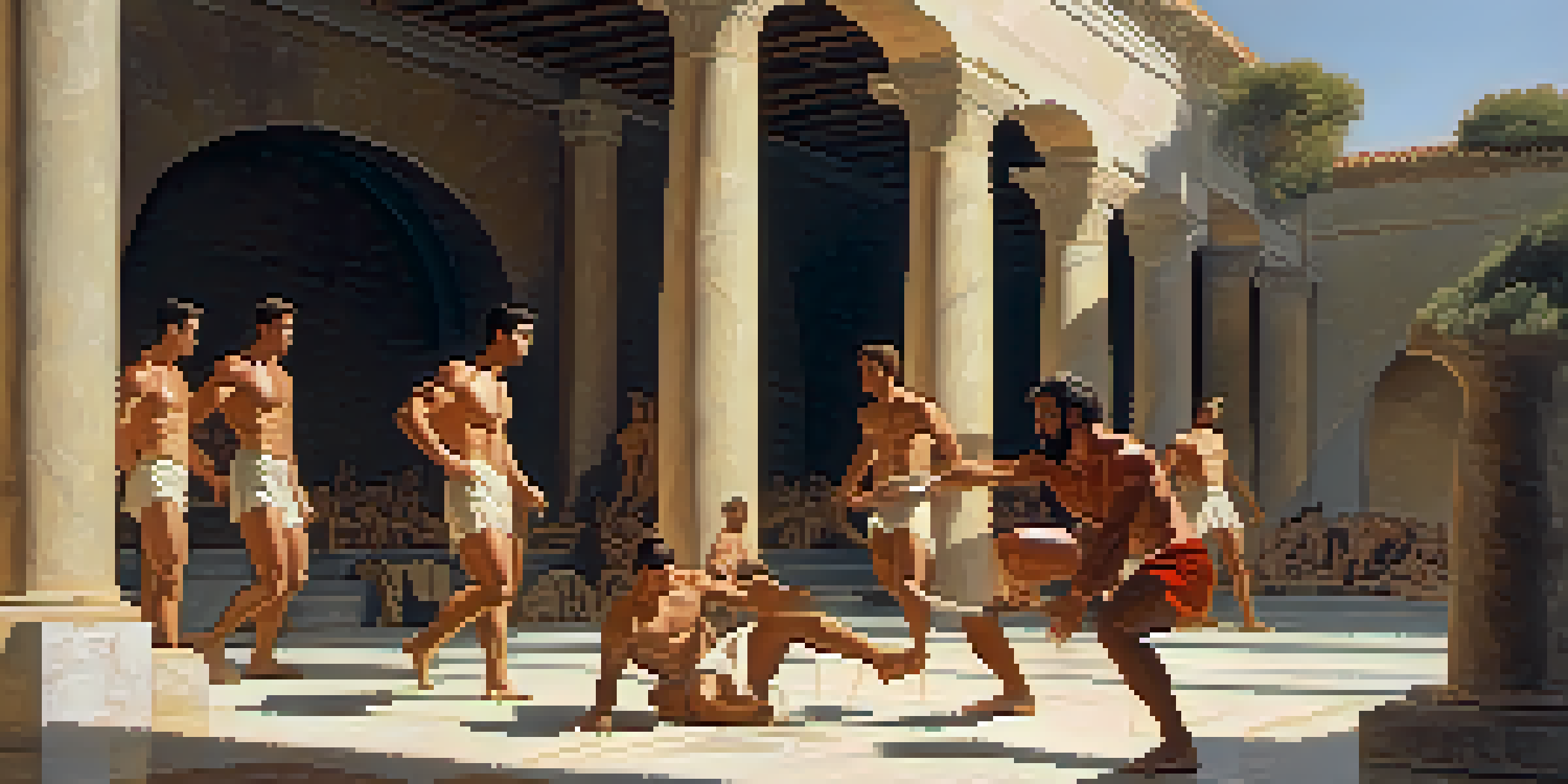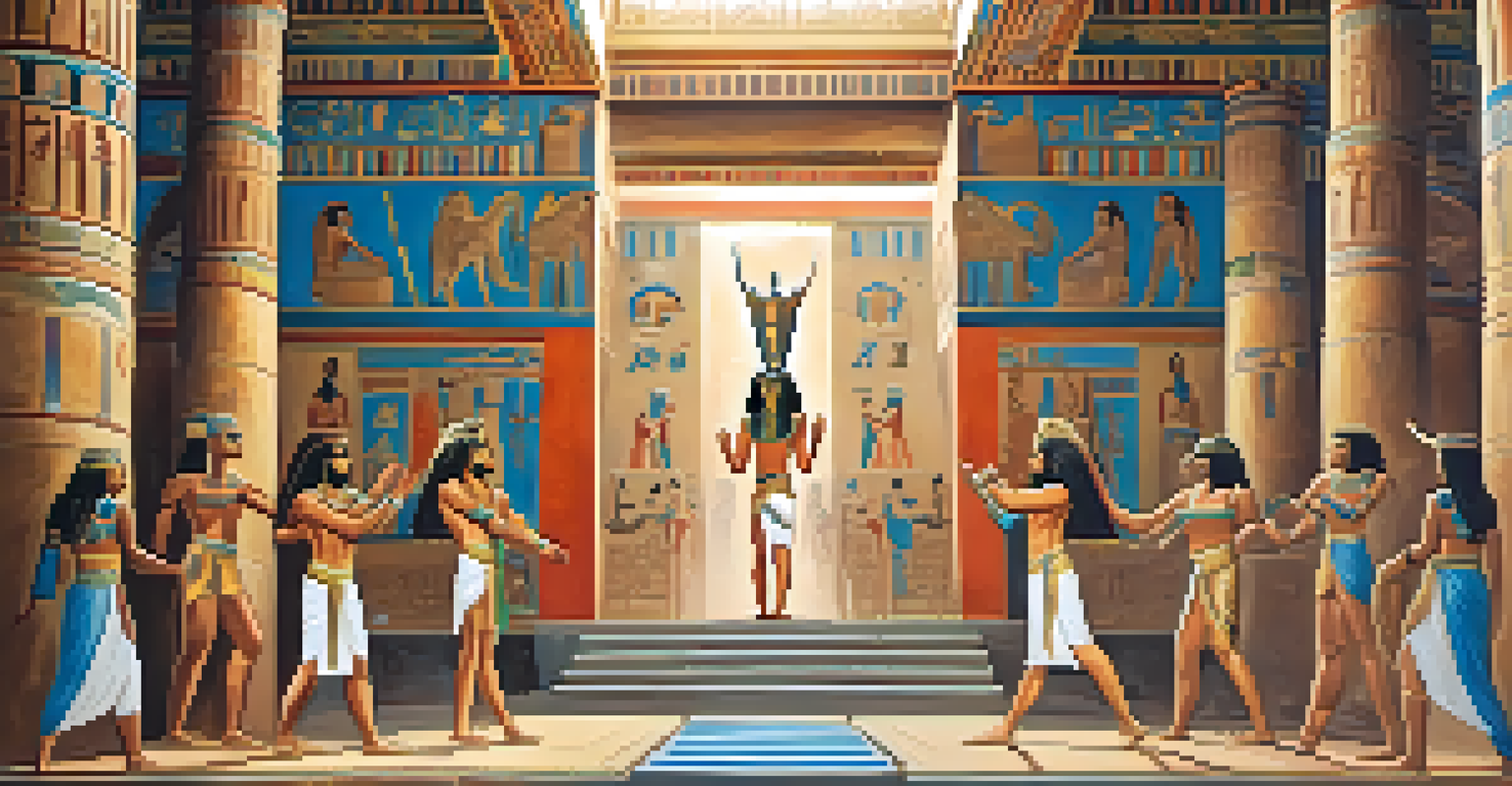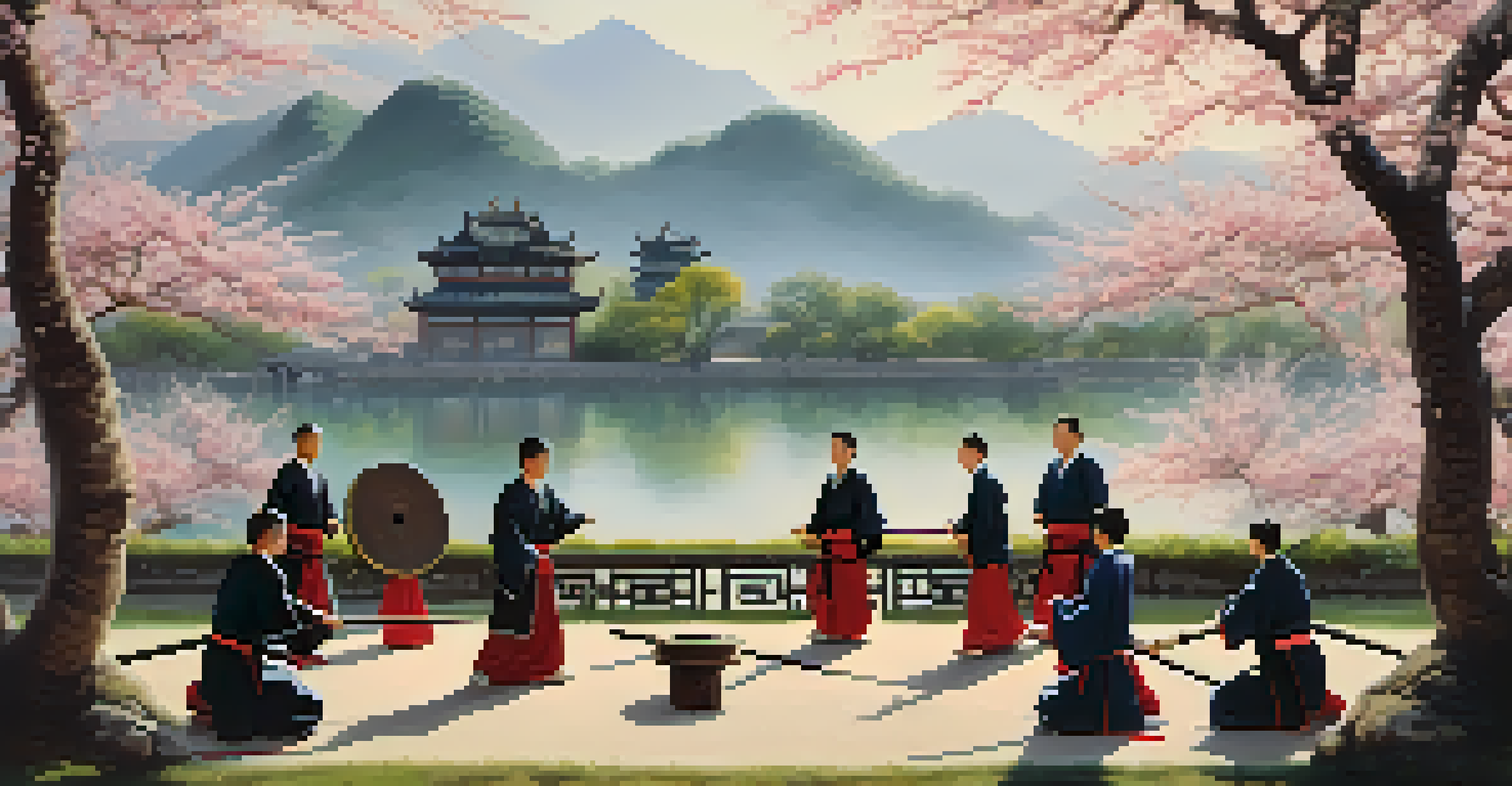Bodybuilding Practices in Ancient Cultures: A Historical Overview

The Origins of Bodybuilding in Ancient Civilizations
Bodybuilding, as a pursuit of physical excellence, has roots that stretch back thousands of years. Ancient civilizations such as Egypt and Greece celebrated the human form, often through physical training and competitions. These early practices laid the groundwork for what we recognize today as bodybuilding, blending strength with artistry.
The mind is everything. What you think you become.
In ancient Egypt, for instance, physical fitness was not just about strength but also about health and vitality, evident in their art and culture. Similarly, the Greeks revered the ideal body, with athletes competing in events like the Olympics, where physical prowess was showcased. This cultural appreciation for the human body inspired many to engage in rigorous training.
These early bodybuilders, though not labeled as such, utilized natural elements for resistance training, often lifting stones or performing calisthenics. Their commitment to physical development set a standard that would echo throughout history, influencing future generations.
Bodybuilding Practices in Ancient Greece
Ancient Greece is perhaps the most renowned culture associated with early bodybuilding practices. The Greeks believed in the concept of 'kalokagathia,' which represented the ideal balance of beauty and virtue, emphasizing a well-developed physique. This philosophy fueled a culture that celebrated physical fitness through rigorous training and competition.

The gymnasiums of ancient Greece were not just places for physical training; they were centers for social interaction and intellectual discourse. Athletes engaged in various forms of training, including wrestling, running, and weightlifting, often using heavy stones to enhance their strength. This holistic approach to fitness contributed significantly to the development of bodybuilding as both a sport and an art form.
Bodybuilding's Ancient Roots
Bodybuilding has origins in ancient civilizations like Egypt and Greece, where physical training was celebrated as a blend of strength and artistry.
The athletes' dedication culminated in the Olympic Games, where victors were celebrated not just for their strength but for their aesthetic form. Sculptures from this era, such as the famous Discobolus, capture the idealized athletic physique, showcasing the Greeks' deep appreciation for the human body.
The Role of Strength Training in Ancient Rome
In ancient Rome, the concept of strength training evolved, influenced by the Greeks but tailored to Roman values. Romans placed a strong emphasis on military strength and physical prowess, leading to regimented training programs for soldiers and athletes alike. Gladiatorial contests also played a significant role in shaping bodybuilding practices during this era.
Strength does not come from physical capacity. It comes from an indomitable will.
Roman gladiators trained intensively to prepare for combat, often employing various methods to enhance their strength and endurance. They used weights, engaged in mock battles, and practiced specific techniques to gain an edge in the arena. This focus on physical conditioning showcased the Romans' strategic approach to body development.
Additionally, the popularity of public games and contests allowed these athletes to gain fame and fortune, further motivating individuals to pursue rigorous training. The Roman understanding of bodybuilding was thus intertwined with notions of power, spectacle, and entertainment.
Bodybuilding in Ancient Egypt and Its Rituals
In ancient Egypt, bodybuilding was often linked to spirituality and rituals rather than mere physical competition. The Egyptians believed that a strong body was a vessel for the soul, essential for the afterlife. This belief led to the development of various physical practices aimed at enhancing strength and endurance.
Physical fitness in Egypt was often showcased through dance, gymnastics, and other forms of exercise, which were integral to their cultural and religious practices. These activities not only promoted health but also served as a means of honoring the gods, underscoring the connection between physical strength and spirituality.
Cultural Significance of Fitness
In many ancient cultures, physical fitness was tied to spirituality and community well-being, influencing practices from martial arts in China to rituals in Egypt.
Moreover, the iconic imagery of Egyptian deities often depicted muscular forms, reflecting their admiration for the strong physique. This cultural reverence for the body influenced their daily lives, encouraging individuals to engage in physical training as a form of worship and personal development.
Exploration of Bodybuilding in Ancient China
In ancient China, physical fitness and strength training were often intertwined with martial arts and philosophies like Taoism. The Chinese emphasized a balance of mind, body, and spirit, leading to holistic practices that included strength training. Techniques such as weightlifting and calisthenics were practiced to cultivate both physical and mental strength.
Martial arts, including Kung Fu, became a popular means of developing the body, promoting flexibility, endurance, and power. These practices required rigorous training, often using traditional tools like wooden staffs or stone weights to enhance strength. This ancient focus on martial prowess contributed significantly to the evolution of bodybuilding in Eastern cultures.
Moreover, physical fitness was often seen as a path to longevity and health. The teachings of ancient sages encouraged individuals to pursue a balanced lifestyle, incorporating physical training as an essential component of well-being.
Indigenous Cultures and Their Approach to Physical Fitness
Across various indigenous cultures, physical fitness held significant cultural importance, often linked to survival and community well-being. Many indigenous peoples engaged in practices that emphasized strength, agility, and endurance, recognizing the value of a strong body for hunting, gathering, and defense. These practices were often communal, fostering a sense of unity among participants.
For example, Native American tribes participated in traditional games that required physical prowess, such as running, wrestling, and pole climbing. These activities were not merely for entertainment; they played a vital role in maintaining physical fitness and cultivating skills necessary for survival.
Legacy in Modern Bodybuilding
The principles and techniques of ancient bodybuilding continue to shape modern fitness culture, emphasizing strength, aesthetics, and a holistic approach to health.
Furthermore, rituals and ceremonies often incorporated physical challenges, reinforcing the connection between strength and cultural identity. This holistic approach to fitness underscored the importance of the body as a vital part of community life and cultural heritage.
The Legacy of Ancient Bodybuilding Practices Today
The ancient practices of bodybuilding have left a lasting legacy that continues to influence modern fitness culture. Many techniques and philosophies from these early civilizations are reflected in contemporary bodybuilding training, emphasizing strength, aesthetics, and overall health. The appreciation for the human body has transcended time, shaping how we view fitness today.
Modern bodybuilding draws on the principles established by ancient cultures, from strength training methods to competitive events. The emphasis on aesthetics and physical prowess, as seen in bodybuilding competitions, echoes the ideals of ancient Greece and Rome. This continuity illustrates the enduring fascination with physical excellence.

Moreover, the holistic approaches to fitness seen in ancient cultures are being revived today, as individuals seek a balanced lifestyle that prioritizes both mental and physical health. By understanding and appreciating these historical practices, we can enrich our own fitness journeys and embrace a more integrated approach to well-being.